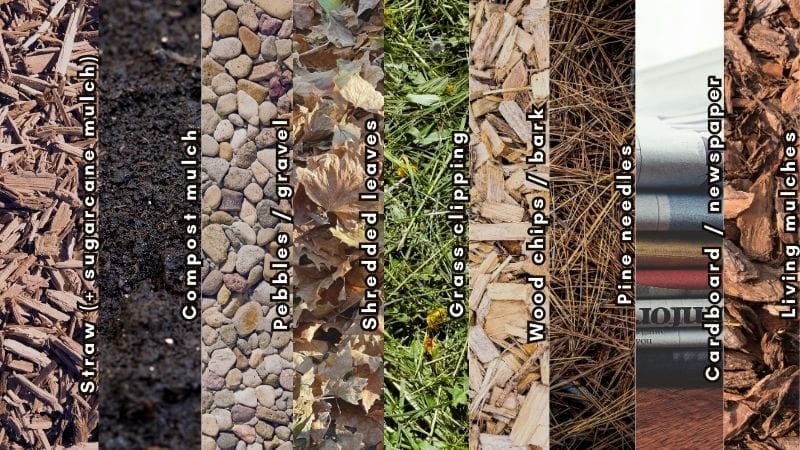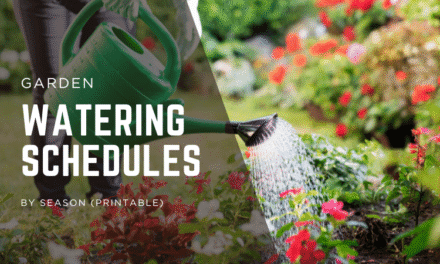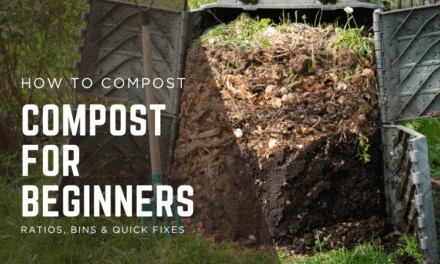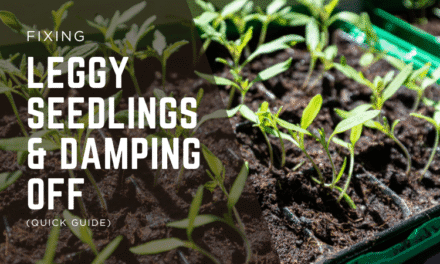This practical guide compares common mulch types for Australian home gardens and paths. You’ll see how each material performs for water savings, weed suppression, soil health and heat moderation, plus how thick to apply and where each shines. By the end, you’ll know which mulch to use in vegetable beds, which to keep for perennials or paths, and how to avoid the classic mistakes that waste time and water.
Why Mulch Is Non‑Negotiable
Mulch is a living soil’s protective blanket. It reduces evaporation, suppresses weeds, and buffers temperature swings so roots stay comfortable. Organic mulches feed soil biology as they break down, improving structure and nutrient holding capacity. Mineral mulches (pebbles, gravel) don’t feed soil but offer durability and low maintenance for paths and ornamentals. In hot, windy Australian summers, a good mulch layer can be the difference between thriving beds and daily rescue watering.
Mulch Types: Side‑by‑Side Comparison

Below is a plain‑English comparison of popular mulch types. Use it to narrow choices, then read the detailed notes for your situation.
Straw (including sugarcane mulch)
- Water saving: high. Light, fluffy layer slows evaporation effectively.
- Weed control: medium. Works well at 5–7 cm but fine seeds can still germinate; top up.
- Soil improvement: good. Adds carbon as it breaks down and encourages soil life.
- Best for: vegetables, herbs, new plantings, summer heat buffering.
- Watch‑outs: can blow in wind; buy weed‑free bales; top up after storms.
Shredded leaves (leaf mould in progress)
- Water saving: high. Interlocking pieces reduce airflow at the soil surface.
- Weed control: medium. Excellent for beds between crops and around perennials.
- Soil improvement: excellent. Decomposes into dark, moisture‑holding humus.
- Best for: fruit trees, perennials, shoulder seasons in veg beds.
- Watch‑outs: matting if thick and wet—mix with twigs or add a thin straw cap.
Wood chips / bark
- Water saving: medium. Larger pieces allow some airflow—great for paths.
- Weed control: medium‑high at 7–10 cm; suppresses many annual weeds.
- Soil improvement: good over time at the surface; great fungal habitat.
- Best for: paths, perennials, shrub borders, young fruit trees (kept off trunks).
- Watch‑outs: don’t mix raw chips into veg soil; keep a gap around stems.
Compost mulch
- Water saving: medium. Fine texture covers well but can crust in heavy rain.
- Weed control: variable. If compost isn’t mature, it may carry seeds—use thinly.
- Soil improvement: outstanding. Boosts nutrients and biology quickly.
- Best for: top‑dressing depleted beds before a straw or leaf cap.
- Watch‑outs: apply in a thin layer (1–2 cm) under a coarser mulch to prevent crusting.
Pebbles / gravel
- Water saving: low‑medium. Reflects some sun but doesn’t reduce evaporation like organics.
- Weed control: medium with fabric underneath; weeds root deeply if debris builds.
- Soil improvement: none. Long‑lasting and tidy, mostly for paths and ornamentals.
- Best for: paths, hot/dry ornamental spots, around tanks, splash zones.
- Watch‑outs: heats soil; not ideal for most edibles in hot summers; fabric can impede soil life.
Grass clippings (thin layers only)
- Water saving: high in very thin layers; can turn anaerobic if thick.
- Weed control: low‑medium; best as a ‘green’ sprinkle under other mulches.
- Soil improvement: good when blended; nitrogen‑rich.
- Best for: mixing with dry mulches (straw/leaves) to balance carbon.
- Watch‑outs: never apply thick mats; avoid clippings with herbicide residues.
Pine needles
- Water saving: medium; needles interlock and shed water.
- Weed control: medium; good around berries and perennials.
- Soil improvement: modest; often used where needles are abundant.
- Best for: blueberries and acid‑loving ornamentals; paths in piney areas.
- Watch‑outs: prickly for hand weeding; acidity effect is small at surface only.
Cardboard / newspaper (sheet mulch)
- Water saving: high when capped with straw/wood chips.
- Weed control: high for smothering turf and perennial weeds; overlap edges well.
- Soil improvement: good when paired with compost and a top mulch.
- Best for: new bed establishment and pathway resets.
- Watch‑outs: remove glossy/plastic tapes; wet thoroughly to mould to contours.
Living mulches (low clovers/groundcovers)
- Water saving: medium; shades soil but competes for moisture if unmanaged.
- Weed control: medium; fills space to block germination.
- Soil improvement: good in perennial systems; roots add organic matter.
- Best for: orchards, wide perennials, and between rows where mowing is easy.
- Watch‑outs: manage height; not ideal right up against veg seedlings.
Organic vs Mineral Mulch (Pros & Cons)
Understanding the core distinction helps you select mulch types that match your goals. Organic materials (straw, leaves, wood chips, compost) feed the soil and increase sponge‑like structure over time. Mineral materials (pebbles, gravel) are tidy and durable but do not nourish soil. In productive vegetable beds, organic {primary_kw} almost always outperform pebbles for plant health and water use. Reserve mineral options for paths, splash zones and ornamental pockets where long‑term tidiness matters more than soil building.
How to Apply (Depth, Timing, Irrigation)
- Water first, mulch second: moist soil under mulch holds water far better than dry soil.
- Depth: generally 5–7 cm for organics in veg beds; 7–10 cm on paths for wood chips.
- Keep stems clear: leave a 3–5 cm collar around stems and trunks to prevent rot.
- Top up: expect to refresh straw and leaves each season; chips every 12–24 months.
- Pair with drip: run lines under mulch to minimise evaporation and leaf wetting.
- Wind and slope: cap fluffy mulches with a light layer of chips or wet thoroughly to settle.
Best Mulch for Vegetable Gardens

For fast‑growing edibles, you want moisture stability, soft surface conditions for planting, and soil life activity. Straw/sugarcane mulch and shredded leaves are standouts. A thin layer of compost under a straw cap supercharges the next crop. In very windy sites, a 1–2 cm chip ‘cap’ over straw reduces movement without sacrificing soil benefits.
- Greens and herbs: straw + compost underlay keeps leaves clean and tender.
- Tomatoes/peppers: straw or chips work; chips reduce soil splash (less disease).
- Root crops: leaves or fine straw; avoid thick woody chips that make sowing tricky.
- Cucurbits (zucchini, cucumbers): coarse straw helps keep fruit off wet soil.
Best Mulch for Paths & Perennials
Paths benefit from stability and long life, while perennials enjoy fungal‑friendly, slow‑breaking mulches. Wood chips or bark at 7–10 cm create springy, mud‑free paths and suppress most annual weeds. Around perennials and fruit trees, chips feed fungi and protect feeder roots.
- Paths: coarse chips/bark; renew every 1–2 years; consider edging to keep chips put.
- Perennials/fruit trees: chips out to the drip line; keep a bare collar at trunks.
- Ornamental hot spots: pebbles for neat, reflective texture—accept extra irrigation needs.
Weed Suppression Strategy & Edging
Mulch slows weeds but doesn’t eliminate them. Edge beds to block runners, and hand‑weed small flushes before they seed. A stirrup hoe run along edges each week makes quick work of tiny seedlings. For new beds over lawn, a cardboard sheet mulch overlapped by 15 cm under chips stops grass ingress.
- Smother first, then mulch: kill the light with overlapping cardboard, then add 7–10 cm chips on top.
- Maintain edges: brick, steel, or timber edging keeps materials from wandering into paths.
- Spot weeding: a monthly 10‑minute pass saves hours later—pull when soil is moist.
Nitrogen & Wood Chips (What Really Happens)
On the surface, fresh wood chips do not rob nitrogen from plant roots because decomposition is occurring at the mulch/air interface, not throughout the soil profile. Problems arise when raw chips are mixed into vegetable soil, where microbes temporarily tie up nitrogen as they decompose high‑carbon material. Solution: keep chips on top, add a little compost first if beds seem hungry, and let biology cycle nutrients naturally.
Aesthetics, Heat & Microclimate
Mulch colour influences heat. Dark mulches absorb warmth; light mulches reflect it. In hot climates, lighter mulches (straw, pale chips) keep soil cooler and reduce stress. In cool springs, darker surfaces can slightly warm the top few millimetres of soil. Mix materials to tune your microclimate—straw in summer, a darker cap in cool shoulder seasons.
Common Mistakes & Fixes
- Thick grass clippings → anaerobic mats. Fix: apply in thin sprinkles or mix with dry straw/leaves.
- Mulch against stems → rot and pests. Fix: maintain a clear collar around stems and trunks.
- Pebbles in veg beds → hot, dry soil. Fix: switch to organics and add compost to rebuild biology.
- Too thin a layer → weeds win. Fix: refresh to 5–7 cm in beds and 7–10 cm on paths.
- Skimping on edging → constant cleanup. Fix: install simple edging to protect your time.
FAQs
What is the best mulch for vegetable gardens?
Straw/sugarcane mulch and shredded leaves are the most forgiving for veg beds—moisture‑holding, easy to plant through, and soil‑friendly. A 1–2 cm compost layer underneath provides nutrients; cap with 5–7 cm straw for water savings and cleanliness.
How thick should mulch be?
In vegetable beds, 5–7 cm balances water savings and sowing ease. On paths, 7–10 cm of chips suppresses weeds and stays put. Keep mulch a few centimetres away from plant stems to prevent rot.
Do wood chips steal nitrogen?
Not when left on the surface. Avoid digging raw chips into the soil. If plants look pale, add compost or a light organic feed before mulching.
Are pebbles ever good for vegetables?
Occasionally for heat‑loving herbs in cool climates, but expect to water more. Pebbles excel on paths and ornamental spots; organics outperform them in productive beds.
Can I mix mulches?
Yes. A thin compost layer plus straw is a proven combo; in windy areas, a light chip cap over straw adds stability.





